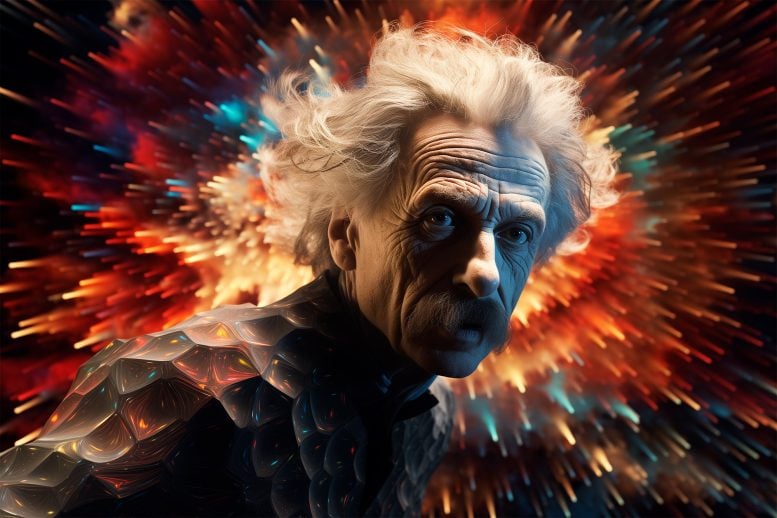
A new theory challenges the foundations of modern physics by suggesting that spacetime is classical, not quantum. This theory predicts larger spacetime fluctuations, impacting object weights. Proposed experiments, like measuring a 1kg mass for weight fluctuations, aim to test this groundbreaking concept, potentially revolutionizing our understanding of gravity and spacetime. Credit: SciTechDaily.com
A radical theory that consistently unifies gravity and quantum mechanics while preserving Einstein’s classical concept of spacetime is announced today in two papers published simultaneously by UCL (University College London) physicists.
Modern physics is founded upon two pillars: quantum theory on the one hand, which governs the smallest particles in the universe, and Einstein’s theory of general relativity on the other, which explains gravity through the bending of spacetime. But these two theories are in contradiction with each other and a reconciliation has remained elusive for over a century.
Challenging the Status Quo: A New Theoretical Approach
The prevailing assumption has been that Einstein’s theory of gravity must be modified, or “quantized,” in order to fit within quantum theory. This is the approach of two leading candidates for a quantum theory of gravity, string theory and loop quantum gravity.
But a new theory, developed by Professor Jonathan Oppenheim (UCL Physics & Astronomy) and laid out in a new paper in Physical Review X (PRX), challenges that consensus and takes an alternative approach by suggesting that spacetime may be classical – that is, not governed by quantum theory at all.
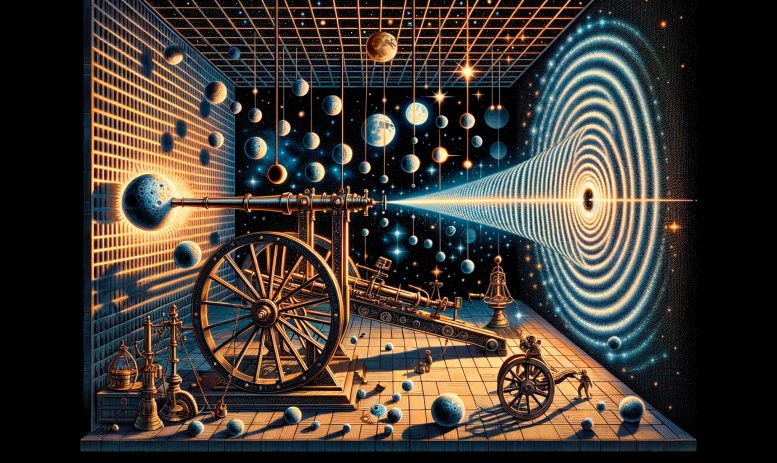
The image depicts an experiment in which heavy particles (illustrated as the moon), cause an interference pattern (a quantum effect), while also bending spacetime. The hanging pendulums depict the measurement of spacetime. The actual experiment is typically performed using Carbon-60, one of the largest known molecules. The UCL calculation indicates that the experiment should also be performed using higher-density atoms such as gold. The other two images represent the two experiments proposed by the UCL group, both of which constrain any theory where spacetime is treated classically. One is the weighing of a mass, the other is an interference experiment. Credit: Isaac Young
Instead of modifying spacetime, the theory – dubbed a “postquantum theory of classical gravity” – modifies quantum theory and predicts an intrinsic breakdown in predictability that is mediated by spacetime itself. This results in random and violent fluctuations in spacetime that are larger than envisaged under quantum theory, rendering the apparent weight of objects unpredictable if measured precisely enough.
Experimental Tests and Theoretical Implications
A second paper, published simultaneously in Nature Communications and led by Professor Oppenheim’s former PhD students, looks at some of the consequences of the theory, and proposes an experiment to test it: to measure a mass very precisely to see if its weight appears to fluctuate over time.
For example, the International Bureau of Weights and Measures in France routinely weighs a 1kg mass which used to be the 1kg standard. If the fluctuations in measurements of this 1kg mass are smaller than required for mathematical consistency, the theory can be ruled out.
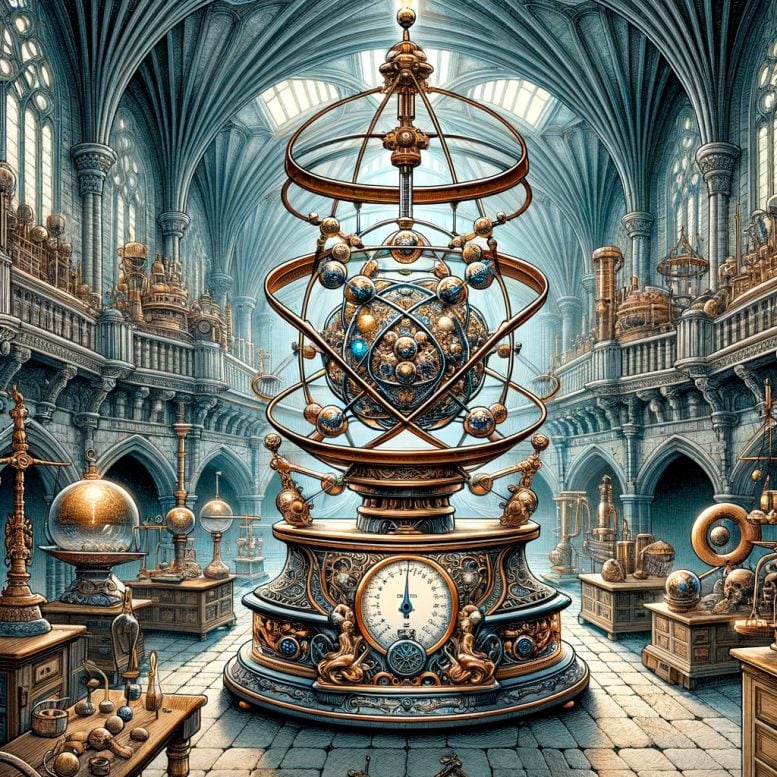
The weighing of a mass — an experiment proposed by the UCL group that constrains any theory where spacetime is treated classically. Credit: Isaac Young
The outcome of the experiment, or other evidence emerging that would confirm the quantum vs classical nature of spacetime, is the subject of a 5000:1 odds bet between Professor Oppenheim and Professor Carlo Rovelli and Dr. Geoff Penington – leading proponents of quantum loop gravity and string theory respectively.
UCL Research Group’s Five-Year Study
For the past five years, the UCL research group has been stress-testing the theory, and exploring its consequences.
Professor Oppenheim said: “Quantum theory and Einstein’s theory of general relativity are mathematically incompatible with each other, so it’s important to understand how this contradiction is resolved. Should spacetime be quantized, or should we modify quantum theory, or is it something else entirely? Now that we have a consistent fundamental theory in which spacetime does not get quantized, it’s anybody’s guess.”
Co-author Zach Weller-Davies, who as a PhD student at UCL helped develop the experimental proposal and made key contributions to the theory itself, said: “This discovery challenges our understanding of the fundamental nature of gravity but also offers avenues to probe its potential quantum nature.
“We have shown that if spacetime doesn’t have a quantum nature, then there must be random fluctuations in the curvature of spacetime which have a particular signature that can be verified experimentally.
“In both quantum gravity and classical gravity, spacetime must be undergoing violent and random fluctuations all around us, but on a scale which we haven’t yet been able to detect. But if spacetime is classical, the fluctuations have to be larger than a certain scale, and this scale can be determined by another experiment where we test how long we can put a heavy atom in superposition* of being in two different locations.”
Contributions and Insights From Co-authors
Co-authors Dr. Carlo Sparaciari and Dr. Barbara Šoda, whose analytical and numerical calculations helped guide the project, expressed hope that these experiments could determine whether the pursuit of a quantum theory of gravity is the right approach.
Dr. Šoda (formerly UCL Physics & Astronomy, now at the Perimeter Institute of Theoretical Physics, Canada) said: “Because gravity is made manifest through the bending of space and time, we can think of the question in terms of whether the rate at which time flows has a quantum nature, or classical nature.
“And testing this is almost as simple as testing whether the weight of a mass is constant, or appears to fluctuate in a particular way.”
Dr. Sparaciari (UCL Physics & Astronomy) said: “While the experimental concept is simple, the weighing of the object needs to be carried out with extreme precision.
“But what I find exciting is that starting from very general assumptions, we can prove a clear relationship between two measurable quantities – the scale of the spacetime fluctuations, and how long objects like atoms or apples can be put in quantum superposition of two different locations. We can then determine these two quantities experimentally.”
Weller-Davies added: “A delicate interplay must exist if quantum particles such as atoms are able to bend classical spacetime. There must be a fundamental trade-off between the wave nature of atoms, and how large the random fluctuations in spacetime need to be.”
Broader Implications and Future Experiments
The proposal to test whether spacetime is classical by looking for random fluctuations in mass is complementary to another experimental proposal that aims to verify the quantum nature of spacetime by looking for something called “gravitationally mediated entanglement.”
Professor Sougato Bose (UCL Physics & Astronomy), who was not involved with the announcement today, but was among those to first propose the entanglement experiment, said: “Experiments to test the nature of spacetime will take a large-scale effort, but they’re of huge importance from the perspective of understanding the fundamental laws of nature. I believe these experiments are within reach – these things are difficult to predict, but perhaps we’ll know the answer within the next 20 years.”
The postquantum theory has implications beyond gravity. The infamous and problematic “measurement postulate” of quantum theory is not needed, since quantum superpositions necessarily localize through their interaction with classical spacetime.
The theory was motivated by Professor Oppenheim’s attempt to resolve the black hole information problem. According to standard quantum theory, an object going into a black hole should be radiated back out in some way as information cannot be destroyed, but this violates general relativity, which says you can never know about objects that cross the black hole’s event horizon. The new theory allows for information to be destroyed, due to a fundamental breakdown in predictability.
Background Information
Quantum Mechanics
All the matter in the universe obeys the laws of quantum theory, but we only really observe quantum behavior at the scale of atoms and molecules. Quantum theory tells us that particles obey Heisenberg’s uncertainty principle, and we can never know their position or velocity at the same time. In fact, they don’t even have a definite position or velocity until we measure them. Particles like electrons can behave more like waves and act almost as if they can be in many places at once (more precisely, physicists describe particles as being in a “superposition” of different locations).
Quantum theory governs everything from semiconductors which are ubiquitous in computer chips, to lasers, to superconductivity to radioactive decay. In contrast, we say that a system behaves classically if it has definite underlying properties. A cat appears to behave classically – it is either dead or alive, not both, nor in a superposition of being dead and alive. Why do cats behave classically, and small particles quantumly? We don’t know, but the postquantum theory doesn’t require the measurement postulate, because the classicality of spacetime infects quantum systems and causes them to localize.
Gravity
Newton’s theory of gravity, gave way to Einstein’s theory of general relativity (GR), which holds that gravity is not a force in the usual sense. Instead, heavy objects such as the sun, bend the fabric of spacetime in such a way that causes the earth to revolve around it. Spacetime is just a mathematical object consisting of the three dimensions of space, and time considered as a fourth dimension. General relativity predicted the formation of black holes and the big bang. It holds that time flows at different rates at different points in space, and the GPS in your smartphone needs to account for this in order to properly determine your location.
Historical Context
The framework presented by Oppenheim in PRX, and in a companion paper with Sparaciari, Šoda, and Weller-Davies, derives the most general consistent form of dynamics in which a quantum system interacts with a classical system. It then applies this framework to the case of general relativity coupled to quantum fields theory. It builds on earlier work and a community of physicists. An experiment to test the quantum nature of gravity via gravitationally mediated entanglement was proposed by Bose et. al. and by C. Marletto and V. Vadral. Two examples of consistent classical-quantum dynamics were discovered in the 90’s by Ph. Blanchard and A. Jadzyk, and by Lajos Diosi, and again by David Poulin around 2017. From a different perspective, in 2014 a model of Newtonian gravity coupled to quantum systems via a “measurement-and-feedback” approach, was presented by Diosi and Antoinne Tilloy in 2016, and by D Kafri, J. Taylor, and G. Milburn, in 2014. The idea that gravity might be somehow related to the collapse of the wavefunction, dates back to F. Karolyhazy (1966), L. Diosi (1987) and R. Penrose (1996). That classical-quantum couplings might explain localization of the wavefunction has been suggested by others including M. Hall and M. Reginatto, Diosi and Tilloy, and David Poulin. The idea that spacetime might be classical dates back to I. Sato (1950), and C. Moller (1962), but no consistent theory was found until now.
References:
“A Postquantum Theory of Classical Gravity?” by Jonathan Oppenheim, 4 December 2023, Physical Review X.
DOI: 10.1103/PhysRevX.13.041040
“Gravitationally induced decoherence vs space-time diffusion: testing the quantum nature of gravity” by Jonathan Oppenheim, Carlo Sparaciari, Barbara Šoda and Zachary Weller-Davies, 4 December 2023, Nature Communications.
DOI: 10.1038/s41467-023-43348-2

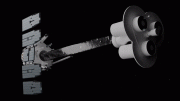
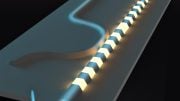

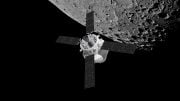

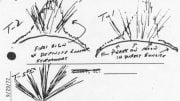
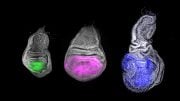
Relativity and quantum mechanics are the theories that human science has described the essence of spacetime closest to the actual situation. According to the theory of topological vortex gravitational field, relativity and quantum mechanics respectively describe the one body and two sides of topological vortex motion. One body is a topological vortex, which is a gravitational field no matter when and where. Two sides are the front and back of the topological vortex gravitational field. Observing both the front and back of the vortex simultaneously, for the observers, if they see left rotation in the front of the vortex, then what they see in the back of the vortex must be right rotation.
This means that topological vortex is one body with both left and right rotation, not a cat with both dead and alive.
Mathematics is always a beacon that guides physics towards the right path and direction. If you are really interested in science, you can browse the comments of the https://scitechdaily.com/microscope-spacecrafts-most-precise-test-of-key-component-of-the-theory-of-general-relativity/.
I hope more people dare to stand up and fight against the rampant pseudoscience, instead of being fooled by the pseudoscientific ideas of the Physics Review Letters (PRL).
Good luck to you all.
According to topological vortex gravitational field theory, spin generates gravitation, spin generates energy, spin generates evolution, spin generates time. In the interaction of topological vortices, the world is an interconnected whole. Each particles has its own phase field. Every particles maintain the state of themselves in space and time through the interaction and balance of these phase fields.
CP violation is a pseudoscientific theory spread by Physical Review Letters (PRL).
Today, CP violation has been viewed by contemporary physics as the key to a deeper understanding of both the behaviour of elementary particles and the Big Bang origin of the universe. Here is an introduction to the CP violations by Proceedings of The National Academy of Sciences (PNAS).
1. If CP-symmetry is not violated, then the matter and antimatter that would have been produced in equal amounts in the early universe would have been annihilated, leaving behind only radiation, whereas theories with CP-violation can explain why, as the universe evolved, a little more matter survived than antimatter, and that makes up the matter we see.
2. There’s strong evidence that elementary particles called quarks (which constitute protons and neutrons) do violate CP-symmetry. The first indication of this came in 1964, when Val Fitch and James Cronin at the Brookhaven National Laboratory discovered violations of CP-symmetry in the decay of K-mesons, which are composed of one type of quark and another type of antiquark. Fitch and Cronin were awarded the Nobel Prize in Physics in 1980 for their efforts.
3. Still, the amount of violation is not enough to explain the excess of matter. So, physicists have begun looking for CP-violation in other classes of particles, such as leptons, the group which includes electrons and neutrinos, among others.
Experiments around the world are looking for signs of the charge conjugation and parity (CP) symmetry violation. However, in scientific research, falsifiable is more important than confirmation. If the topological vortex and its twin anti-vortex conform to the physical characteristics of matter and anti-matter, no one believes that in topological phase transition, a little more matter survived than antimatter.
Although there are many doubts and inconsistencies regarding CP violations, the Physical Review Letters (PRL) and the Proceedings of the National Academy of Sciences (PNAS) still refuse to discuss this topic. This is the hypocrisy, dirtiness, and ugliness of contemporary physics and so-called academic journals.
The interaction between materials and environmental factors very important, and its physical essence is the synchronous effect of topological vortices.
If you are really interested in science, you can browse the comments of the https://scitechdaily.com/microscope-spacecrafts-most-precise-test-of-key-component-of-the-theory-of-general-relativity/.
I hope more people dare to stand up and fight against the rampant pseudoscience, instead of being fooled by the pseudoscientific ideas of the Physics Review Letters (PRL).
Good luck to you all.
This is hilarious. Lacking spacing control, they might as well admit that when gravity bends/distorts/squeezes/stretches/speeds-up/slows-down light particles (aka photons), it leaves the distances between the light particle centroids unchanged. Bending space and time thus becomes a super-fun-time option to explain bent light. Problem with that is global psycho-supremacist brains will explode if this Einsteinian delusion becomes well known, hence they eagerly spring into media action with nonsense like this article.
I’ve been writing on this site and elsewhere for years about quantum uncertainty in atomic clocks being the most obvious Achilles heel for the royal psy-op that is Einstein’s bent spacetime paradigm.
Are these two different theories being questioned, is there only one answer, what I see in these comparisons is a difference of a closed system verse’s a open system, why can’t both be important to the other, the difference may be in a transitional area an interface that melds each function together in our universe. We live inside a magnetic field and in open space the boundaries are the universe mostly observed with the aid of photons.
The quest for quantum gravity is much like the quest for dark matter. Blind and ignorant, but we speculate anyway. I guess it’s better than ignoring the problems completely, but it seems that it way past time to consider other ideas.
Luckily, we are able to accomplish quite a lot with what we are able to understand.
This is hilarious: after reading the article and skipping over all the obligatory credits to all the people involved, it’s a question of quantum mechanics equaling relative mechanics in the search for scientific truth in the cosmos.
Einstein’s theory of relativity works for GPSs. At least, we know that much is true. If it wasn’t for Einstein’s theory I have read, we wouldn’t have the GPS that we have today.
So we know his formula works for that much at least. And it works for other things on a grand scale such as the bending of light around objects in space, like the sun.
And as far as quantum mechanics is concerned, I don’t know how much of that is still mathematical theory and how much has been proven.
But that gets into describing an electron as a field or a particle and that is a different thing altogether. The reason that we describe electrons as fields is because we cannot know where one is at any one time. Why? They’re too fast. We can know the probability of where one is at one time. That’s all that means.
It’s amazing that atoms and electrons are similar to the sun and the planets, though they are not the same. They are similar in that electrons have orbits around the nucleus of atoms, and the Earth has an orbit around the sun. But they exist on different scales. They seem to be similar, but not the same.
It speaks of a certain order in the universe, of a certain design. The popular theory that the universe is a bubble on a super universe is just conjecture. And that it came out of an instantaneous explosion of a point so small is also conjecture.
I once saw a debate between particle physicist and string physicists, and the particle physicist didn’t want to hear what the string physicist said, because they had no proof of what they believed. It was pure mathematical construct.
It’s like the place where I live at the moment. I know that it exists because I walk on the floor everyday, but after engaging in this conversation it doesn’t seem to be as real as it was 20 minutes ago!
The reason for that non-reality feeling I get is because I know that God will someday recreate the universe, in this universe, or cosmos, is slated to be rolled up like old clothes and thrown away!
https://scitechdaily.com/science-made-simple-what-is-the-theory-of-relativity/
Key point after wasting a lot of time on theory not used by GPS: “Global positioning system (GPS) satellites fly in different orbits around the Earth. These orbits are different frames of reference, so GPS has to take special relativity into consideration to help us navigate.”
They left out general relativity for a reason, although gravity change shifts the frequency of light (this is common knowledge) it is much more significant that the timing of (spacing between) photons is left unchanged and there are no clocks on the satellite actually indicating a time rate difference accumulated over a significant amount of time, compared to identical clocks on Earth. This is simply because empty space lacks net positive energy to be drawn in by gravity, considering one must remove positive energy particles like neutrinos and photons to obtain a true vacuum.
Sure, I know, every genius on the planet says gravitationally bent spacetime is the cat’s pajamas and the last word for GPS. Not quite the level of bluster I’d get from patent attorneys from time to time, but all just as misguided. Know what? they’re all faking it, vacuously mailing it in at best.
“the timing of (spacing between) photons is left unchanged”
That’s a little bit of an overstatement that supposes a few things about changes in gravity along a path shared by two photons. I could compare the situation better to two packets of energy on a variable gravity fiber optic cable with variable light speed. Each light packet still takes the same time delay to traverse the same points along the entire cable regardless of variations alongh the way.
I have read so many comments. Deeply understanding the misleading nature of the Physics Review Letters (PRL) towards contemporary physics is a sin.
hi
please send me news
I think that Oppenheim et al. are on the right track, but that there is still more to the classical/quantum gravity divide. My theory of gravitative induction postulates that gravity itself has two sources: one classical and unquantifiable, an exclusively gravitationally attractive conservative field that cannot do any work; the other ones entirely quantum, consisting of particle streams that build up two non-conservative fields, one gravitationally attractive, the other repulsive, where work is done, namely accelerating or rather jerking stars and galaxies. See the section ‘Conclusion’ in my preprint with the mention of Oppenheim’s previous papers: https://www.researchgate.net/publication/372658525_Two_Sources_of_Gravitation_Gravitative_Induction_GI_the_Kinetics_of_Galaxies_Galaxy_Clusters_and_Cosmic_Evolution
Sorry, not “unquantifiable”, of course, but “unquantizable”.
As they attenpt to precisely measure the standard weight if gravity is a quantum function then wouldn’t the Uncertainty Principle dictate that the measurement would become less precise?
These AI generated images are absolutely inappropriate for depicting ANY of the experiments they are supposed to reference. You guys HAVE to see how terrible these are, right? This is like using Hieronymus Bosch to do scientific illustration.
It’s like I can almost sense some people are being tortured by AI making giant concentric diffraction rings morph into galactic fingerprints. Fortunately, Google can derate all this to calm down the elite gravity expert rent-seeking population. No real US money goes there, I hope.
It’s AI’s visceral “Hellraiser Einstein” collectibles that everyone really wants to see.
“Bored Hellraiser Einstein Yacht Club” NPC series – could be gold, amiright?
Science of time and the theory of everything revised edition by Bhausaheb Bhosle has all the answers related to the theory of everything retaining the same word and the same meaning. Time bound time dependent theory.
Matter or mass is constant;so,the speed of light but the weight chsnges due to change in gravity as specified by Einstein’s GR.
Unified gravity is given by Star Dynamic Gravitational Constant G*,approximately equal to Universal Gravitational Constant G.
Present discussioñs with two theories in the context of unified theory are good attempts.Space increases with mass of supermassive black hole at the center of galaxy along the time axis.
Matter,mass and atom do not change;simpĺty space change with weight along the time axis,starting from the big bang as origin.So,General Relativity and Quantum Mechanics are in an assembly in the Star Dynamics describing motion of stars around the center of galaxy.With these facts only a theory on unified gravity;that is,union of Einstein’s general relativity and quantum gravity can be established bearing a resultant value corresponding with Universal Gravitational Constant G.
“In both quantum gravity and classical gravity, spacetime must be undergoing violent and random fluctuations all around us, but on a scale which we haven’t yet been able to detect.”
Unvalidated rubbish theory from the royal perimeter, namely pretending gravitons are like photons and applying low positional uncertainty (extreme smallness) as a conjugate to energy (momentum). Keep listening to these strong and effective imperial knowitall birdbrains.
“pretending gravitons are like photons”
A graviton of minimal energy should be practically indistinguishable from a corresponding volume carrying a quantum of vacuum. Graviton size is completely decoupled from the energy because a graviton is hybrid of positive (photon-like) energy and an effective negative energy volume that binds up the positive energy, forming a unitary spin (bosonic) quantum with zero effective mass.
To use a planetary analogy, a quantum of balanced-gravity space would practically resemble a moonless water-world and a graviton would represent a world covered with a pair of tidal bumps, making it spin two bosonic.
With so many comments, they are heart wrenching to read.
I believe that science will eventually break free from the pseudo-scientific theories created by the Physical Review Letters (PRL). Science will not change due to the misleading nature of the Physical Review Letters (PRL).
God, all those Gen AI images look terrible.
The style is “steampunk.” AI appears to be depicting a crater-revelational steampunk Einsteinian gravity backfire.
The Schwarzschild metric, whereby reduced lightspeed at an escape speed squared being 1/2 for lightspeed itself being 1/2 indicates light converts to gravity. One-half lightspeed as an upper limits resolves such paradoxes as an expanding universe being contrary to the blackhole condition. More generally, however, c remains an upper limit except for particular circumstances. My booklet is titled Modifying Relativity Theory.
I believe my analysis could contribute to the unification of theory.